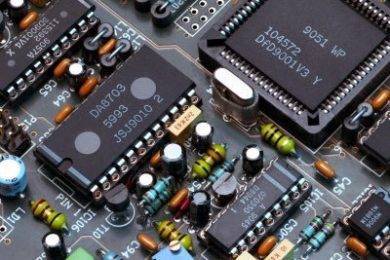If you’re looking to develop a new skill and you’ve somehow decided that learning basic electronics is the perfect new hobby, there are a few things that you must learn and acquire before getting started. The field of electronics can be vastly complicated but having at least an ample amount of knowledge in this area, can come in handy especially for household electrical maintenance.
Before you get into basic electronics knowledge, you first need to acquire some of the common tools that are necessary with any project. Being equipped with the proper tools is essential for both efficiency and safety. Read on as we’ve provided a list of some of the common tools and equipment you would need for almost every electrical assembly.
Digital Multimeter- A digital multimeter is essential for both advanced and basic electronics. It is used to measure the voltage, resistance, and electric current that is actively running throughout the electrical system.
Breadboards- Considered as an electrician’s canvass, breadboards allow you to build and test temporary circuit layouts. The holes on a breadboard allow you to mount the components by inserting wires and other parts temporarily without the need to solder.
Alligator Clips- Properly known as test leads, alligator clips join components together temporarily to test the electrical connections without soldering.
Battery Holders- A battery holder can be composed of two or more compartments. They hold dry cell batteries and allows you to test them by making contact with battery terminals. Some battery holders may come with an on or off switch.
Jumper Wires- Together with breadboards, jumper wires are used for changing or modifying circuits easily. They have connector pins on each end therefore soldering is not necessary when attaching them to other components.
Soldering Iron- For any advanced or basic electronics project, it’s always ideal to keep a soldering iron at hand. They create permanent circuits and are used when the final assembly is being done.
Heat Guns- Used to shrink plastic tubing or insulation, heat guns are also commonly utilized for assembling the final output. By shrinking the tubing or insulation according to the appropriate size, it protects any exposed wires.
An Introduction to Schematic Diagrams
Now that you know some of the tools necessary for a basic electronics assembly, it’s now time to learn how to start your electrical design. Schematic diagrams are always the best way to draft any kind of electrical circuit layout.
In electrical engineering, wiring diagrams are also called circuit diagrams or wiring diagrams. They are used to give an electrician an overview of the operation of a particular electronic device. It also helps them understand how the whole structure was electrically connected so they can diagnose any problems easily. Knowing how to design your own schematic diagram can also give you a reference for future repairs.
A schematic diagram in basic electronics should show the connection of the different components of the electrical circuit with a more graphic representation. There are certain standardized symbols that represent all the elements of the circuit that you should master and be able to recognize. Additionally, familiarizing yourself with CAD software can help you understand basic electronics and schematic diagrams better. It also strengthens your ability to create basic layouts and electrical designs.
I am Jones Smith and I am here to share my experience and expertise in writing. I’ve been writing articles for different publications for more than 6 years. I have a varied range of interests and that’s why I love blogging about different topics. In my opinion, blogging is a lot like acting, and I consider writing blog posts as an acting job. I am an entrepreneur by heart and there is nothing big or small when it comes to starting a business.










